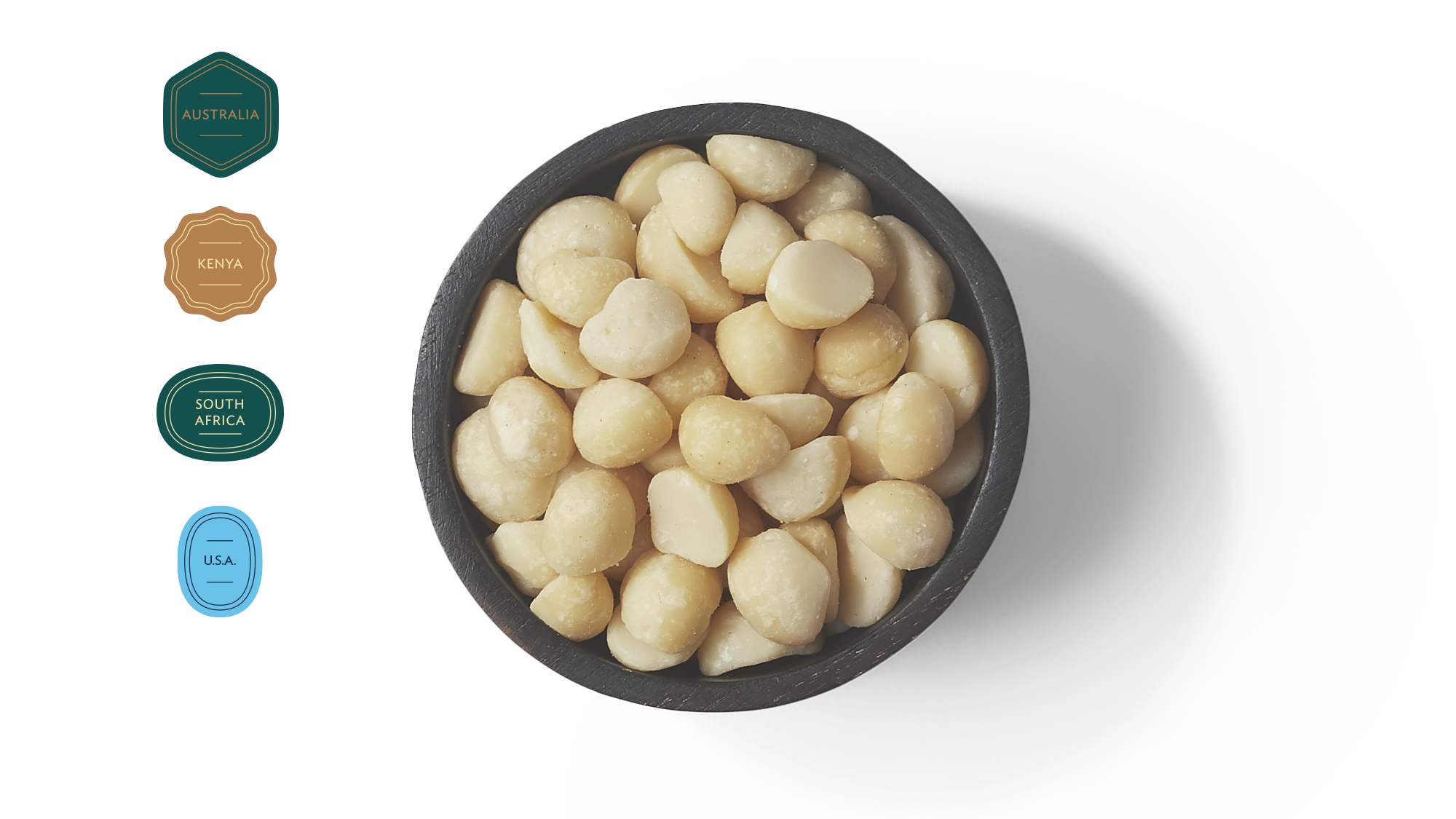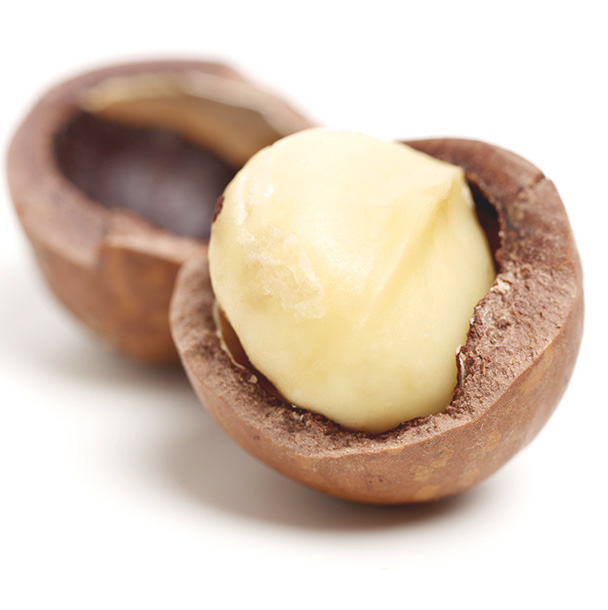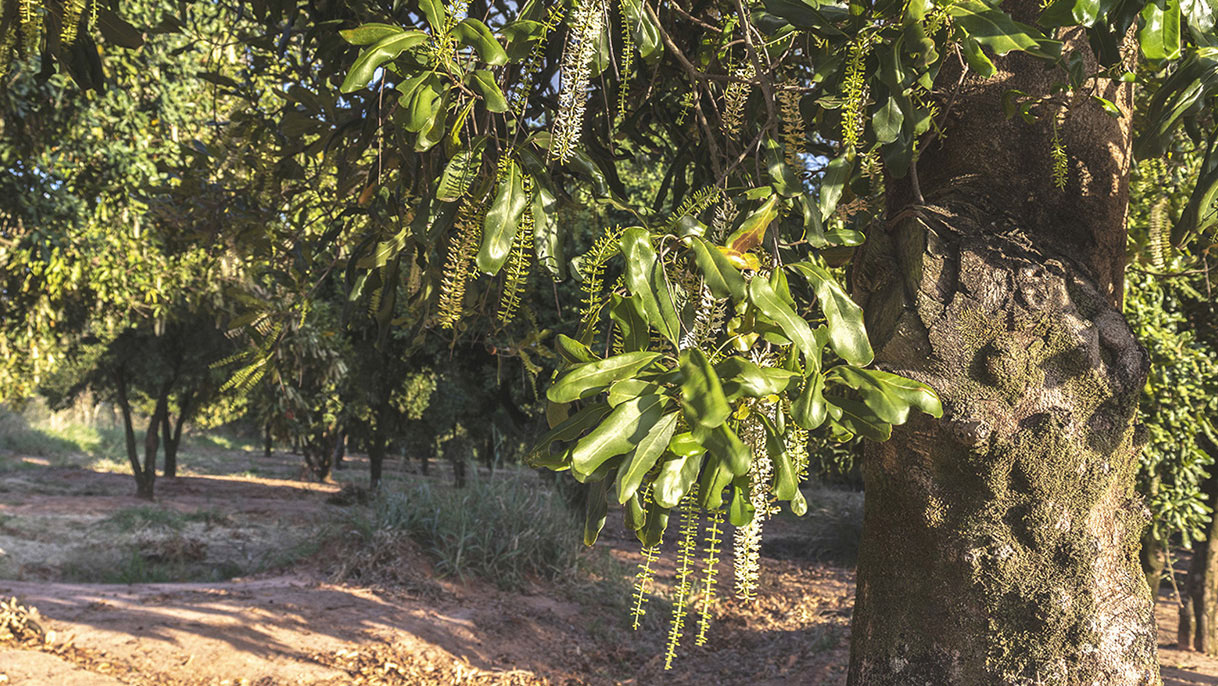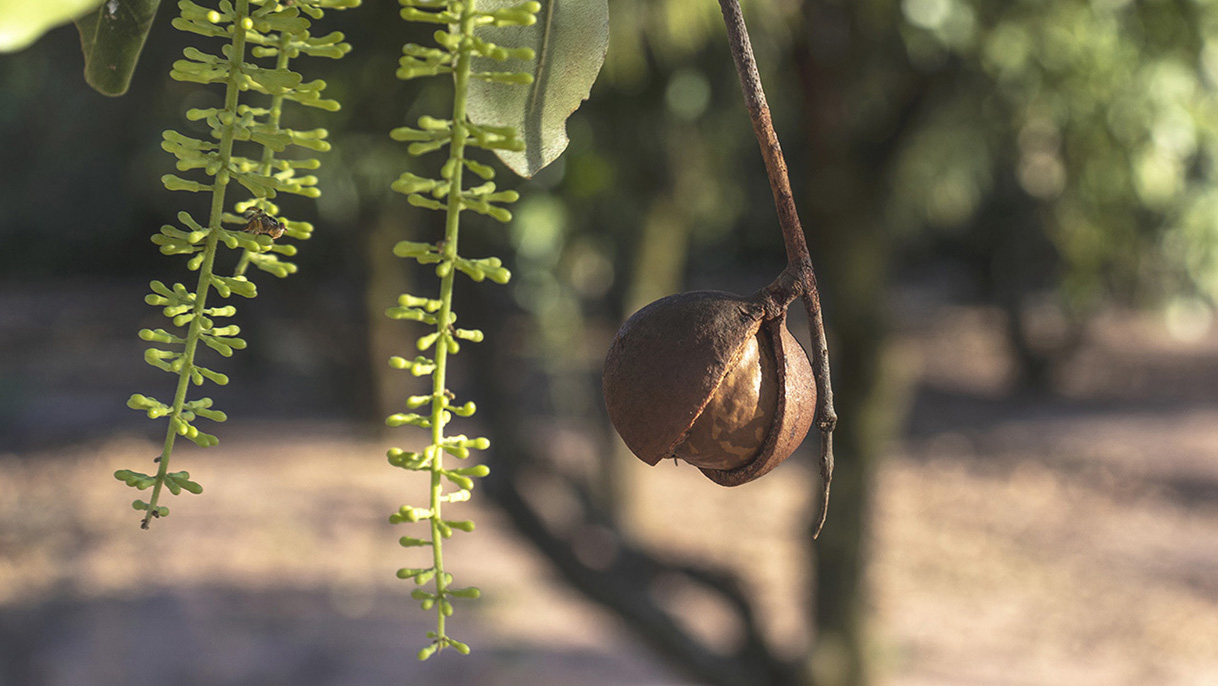A Macadamia Nut’s Journey
Macadamia trees do not begin to produce commercial quantities of seeds until they are 7–10 years old, but once established, may continue bearing for over 100 years. Macadamia trees require rich soil, about 50 inches of rain per year, and temperatures that are not only frost-free but that vary within a limited range. The trees are evergreen and everbearing, with shiny leathery leaves. They produce clusters of long, delicate fragrant white blossoms. Each flower cluster produces up to 20 nutlets, which have green, fibrous husks and hard outer shells that split open as the nuts ripen.









